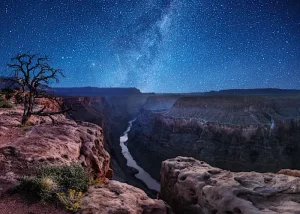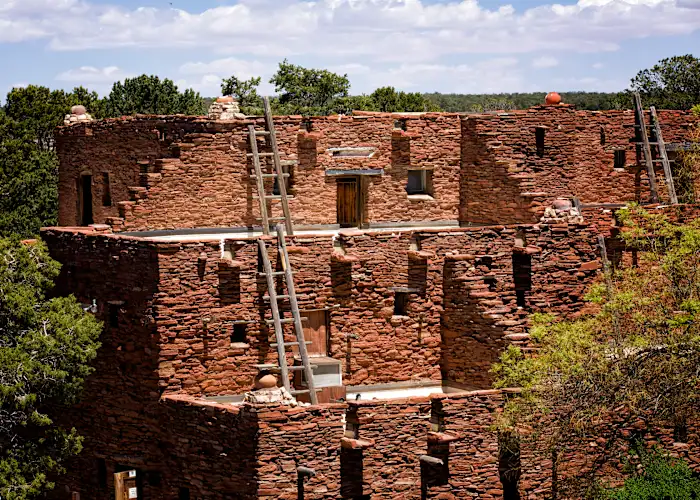How to Plan a Grand Canyon Vacation – Part II
Did you miss Part I of our how-to series? Find it here.

From Morning Into the Night
More than a mile deep and up to 18 miles wide, the Grand Canyon calls to each visitor with colorful light shows from sun-up to sun-down. Clouds cast shadows across the depths. Bright blue skies provide a stunning contrast to the ruddy red and gilded gold geographic formations. Peer down as hikers inch their way along the trails and the Colorado River unfurls far below.
You’ll want to return to your favorite views time and again as changing weather, wind, cloud formations and shifting light combine to deliver a unique experience each time you revisit the Canyon’s edge.
And when the sun sets, tilt your head back for yet another spectacular event. On a clear night, you’ll be treated to a blanket of stars. At 7,000 feet and with some of the darkest skies in the country, the slew of constellations and the wide swath of the Milky Way can be as tantalizing as the daytime views of the Canyon.
So much to See and Do
In between ogling the main attraction from every angle, you’ll want to explore the many historical buildings, national landmarks, activities and local businesses that provide context for the grandest canyon.
The historic center of Grand Canyon Village includes numerous park structures, many of which are National Historic Landmarks. The must-see Historic Village, planned by the National Park Service, is the largest example of Park Service town planning in the park system. Legendary architect Mary E. J. Colter designed nearly half of the buildings included in the district. Take a self-guided walking tour or wander as you will.

Don’t Miss:
Hopi House
Opened in 1905, was designed by Mary E.J. Colter to reflect a typical adobe pueblo used by the Hopi Indians of Old Oraibi. A National Historic Landmark, the Hopi House has been offering authentic Native American arts and crafts to visitors for purchase for decades. Visit to combine museum-quality artifact viewing with retail shopping for hand-crafted kachinas, Native American jewelry, hand-woven Navajo rugs and authentic Native American pottery.
Lookout Studio
Another Colter design, the Lookout Studio clings to the edge of the rim, providing impressive views. Two small outdoor overlooks are open in good weather.
The El Tovar Stables
Built in 1904, were constructed to house horses and mules used for transportation around the park in pre-automobile times, and continue to be used to house mules for trips to Phantom Ranch, located on the floor of the Canyon.
The Grand Canyon Depot (1910) and Grand Canyon Railway (1905). The depot, designed by Francis W. Wilson, is an individually listed National Historical Landmark and is the last log depot still in use in the United States , and the railway is on the National Register of Historic Places. Take note as the beautifully restored trains rumble into the station.
Kolb Studio
Once the home of the Kolb brothers, early photographers of the Grand Canyon, Kolb studios is listed on the National Register of Historic Places and is operated by the Grand Canyon Conservancy. Located at the start of the Bright Angel trailhead, visit to peruse the bookstore and view the changing art exhibits offered throughout the year.